Temperature Conversion
- Convert Temperature Units
- Temperature Units – Definition
- Temperature Units – Conversion Rules
- Convert Temperature Units – Detailed Examples
- Convert Temperature Units – Guided Practice
- Convert Temperature Units – Exercises
- Convert Temperature Units – Summary
- Convert Temperature Units – Frequently Asked Questions
Learning text on the topic Temperature Conversion
Convert Temperature Units
Today, we'll focus on how to switch between Fahrenheit and Celsius temperature units. These two scales are used in different parts of the world to measure temperature. Knowing how to convert between them is helpful, especially if you're reading weather reports or cooking recipes from other countries.
Temperature Units – Definition
Celsius: Celsius, often noted as °C, is a way to measure temperature. It's like using a ruler, but instead of measuring how long something is, it measures how hot or cold something is. In the Celsius scale, water freezes at 0 degrees and boils at 100 degrees. It's named after Anders Celsius, a scientist.
Fahrenheit: Fahrenheit, shown as °F, is another method to measure temperature. Think of it as another kind of ruler for checking how warm or chilly something is. On the Fahrenheit scale, water freezes at 32 degrees and boils at 212 degrees. This scale is named after Daniel Gabriel Fahrenheit, who invented it.
These scales are just two different ways of describing the same thing – temperature. Today, we will focus on how to convert between these two units of temperature.
Converting temperature units means changing a temperature reading from Fahrenheit to Celsius, or vice versa.**
To convert temperatures, we use specific formulas. Fahrenheit and Celsius are different scales with different starting points, so the conversion involves a bit of arithmetic.
Temperature Units – Conversion Rules
Converting between Fahrenheit and Celsius is easy if you follow the steps:
Fahrenheit to Celsius: Subtract 32 from the Fahrenheit temperature, multiply by 5, and then divide by 9.
Celsius to Fahrenheit: Multiply the Celsius temperature by 9, divide by 5, and then add 32.
Here's a simple table to help you remember these conversions:
| Converting… | Formula |
|---|---|
| Fahrenheit to Celsius | $(°C = \frac{(°F - 32) \times 5}{9} )$ |
| Celsius to Fahrenheit | $(°F = \frac{°C \times 9}{5} + 32 )$ |
Convert Temperature Units – Detailed Examples
Let's practice converting temperatures with two examples. Pay attention to each step!
First, let's convert 68°F to Celsius.
- Understand the Formula: Use $(°C = \frac{(°F - 32) \times 5}{9} )$.
- Set Up the Operation: Subtract 32 from 68, then multiply by 5, and divide by 9.
- Calculate: Perform the calculation: $( \frac{(68 - 32) \times 5}{9} = 20 )$.
- Conclusion: So, 68°F is equal to 20°C.
Now let's convert 20°C to Fahrenheit.
- Understand the Formula: Use $(°F = \frac{°C \times 9}{5} + 32 )$.
- Set Up the Operation: Multiply 20 by 9, divide by 5, and then add 32.
- Calculate: Perform the calculation: $( \frac{20 \times 9}{5} + 32 = 68 )$.
- Conclusion: Therefore, 20°C equals 68°F.
Convert Temperature Units – Guided Practice
Let's solve two problems together.
What is 32°F in Celsius?
What is 100°C in Fahrenheit?
Convert Temperature Units – Exercises
Now, try converting temperatures on your own!
Convert Temperature Units – Summary
Key Learnings from this Text:
Converting between Fahrenheit and Celsius involves using simple formulas.
Fahrenheit to Celsius formula: $(°C = \frac{(°F - 32) \times 5}{9} )$
Celsius to Fahrenheit formula: $(°F = \frac{°C \times 9}{5} + 32 )$.
Explore more on our platform with interactive practice problems, engaging videos, and printable worksheets. If you need extra support, check out our other lessons on measurement conversions.
Convert Temperature Units – Frequently Asked Questions
Temperature Conversion exercise
-
Celsius or Fahrenheit?
HintsThe equivalent temperature value on the Fahrenheit scale is higher than the Celsius scale. For example $68^\circ$ Fahrenheit $= 20^\circ$ Celsius.
As the same temperature is a lower number in Celsius, we could assume freezing point for Celsius is $0^\circ$ and use the formula given to convert this freezing point to Fahrenheit. For this, substitute $0^\circ$ to work out the freezing point.
Solution- Fahrenheit scale boiling point $= 212^\circ$F
- Fahrenheit scale freezing point $= 32^\circ$F
- Celsius scale boiling point $= 100^\circ$C
- Celsius scale freezing point $= 0^\circ$C
-
Convert Fahrenheit to Celsius.
HintsSubstitute $77$ into the formula.
$^\circ$C $= (77 - 32)\times\frac{5}{9}$
Using
$^\circ$C $= (77 - 32)\times\frac{5}{9} = 45\times\frac{5}{9}$
Multiply $45$ by $5$ and divide by $9$ to get the answer in Celsius.
SolutionAnswer $= 25^\circ$C
Substitute $77$ into the formula.
- $^\circ$C $= (77 - 32)\times\frac{5}{9}$
- $^\circ$C $= (77 - 32)\times\frac{5}{9}$
- $^\circ$C $= 45\times\frac{5}{9}$
- $^\circ$C $= 45\times5\div9$
- $^\circ$C $= 25$
-
A hot day at the beach.
HintsUse this formula to convert Fahrenheit to Celsius.
Substitute $113$ in there for F.
Using F $= 113$
$^\circ$C $= \frac{5}{9} (113 - 32)$
Continue to calculate C from here.
SolutionAnswer is $45^\circ$C
- $^\circ$C $= \frac{5}{9} (113 - 32)$
- $^\circ$C $= \frac{5}{9}\times 81$
- $^\circ$C $= 45$
-
Oven temperature conversion.
HintsUse this formula to convert Celsius to Fahrenheit.
Substitute $235$ for C.
Using C $= 235$
$^\circ$F $= (\frac{9}{5}\times235) + 32$
Continue to calculate F from here.
SolutionAnswer is $455^\circ$F
- $^\circ$F $= (\frac{9}{5}\times 235) + 32$
- $^\circ$F $= 423 + 32$
- $^\circ$F $= 455$
-
Convert Celsius to Fahrenheit.
HintsSubstitute $15$ into the formula.
$^\circ$F $= (\frac{9}{5}\times15) + 32$
Using
$^\circ$F $= (\frac{9}{5}\times15) + 32$
Multiply $15$ by $9$ and divide by $5$ here. We can then add the answer to $32$.
SolutionAnswer $= 59^\circ$F
Substitute $15$ into the formula.
- $^\circ$F $= (\frac{9}{5}\times15) + 32$
- $^\circ$F $= (15\times9\div5) + 32$
- $^\circ$F $= 27 + 32$
- $^\circ$F $= 59$
-
The temperature in Iceland during winter.
HintsUse this formula to convert Fahrenheit to Celsius.
Substitute $-22$ in there for F.
Using F $= -22$
$^\circ$C $= \frac{5}{9} (-22 - 32)$
Continue to calculate C from here, but be careful with the negatives!
SolutionAnswer is $-30^\circ$C
- $^\circ$C $= \frac{5}{9} (-22 - 32)$
- $^\circ$C $= \frac{5}{9}\times(-54)$
- $^\circ$C $= -30$ (As $54$ is negative, the answer is negative when multiplied by a positive fraction)

Even and odd numbers

Divisibility Rules - 3, 6, 9
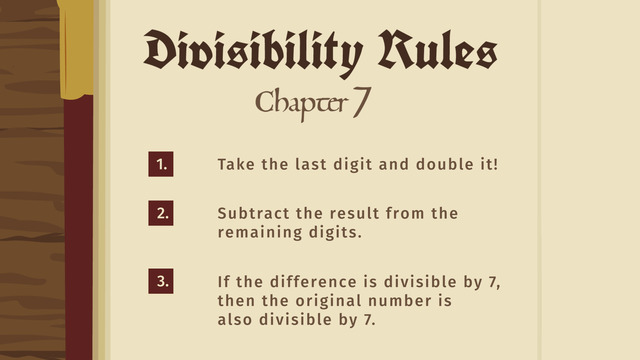
Divisibility Rules - 7

Divisibility Rules - 4, 5, 8, 10
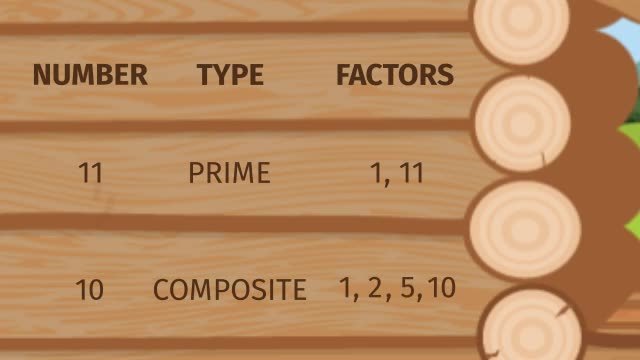
Prime Numbers

Integers and their Opposites
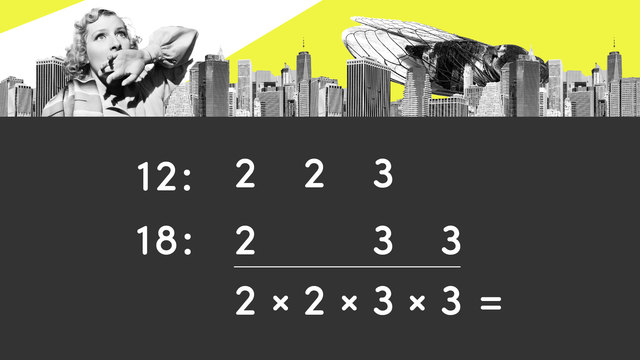
Least Common Multiples

Prime Factorization
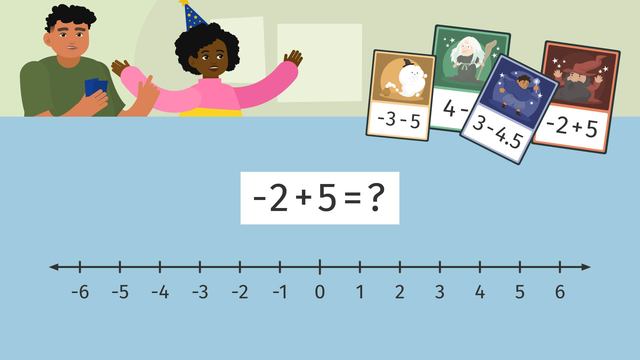
Adding and Subtracting Rational Numbers on a Number Line

Ordering Rational Numbers
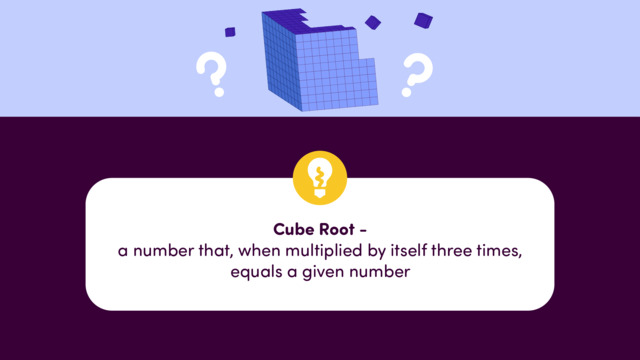
Cube Roots

Rational and Irrational Numbers

Ordered Pairs on the Coordinate Plane

Finding the Greatest Common Factor

Adding and Subtracting Decimals

Comparing Fractions

Equivalent Fractions

Simplifying Fractions
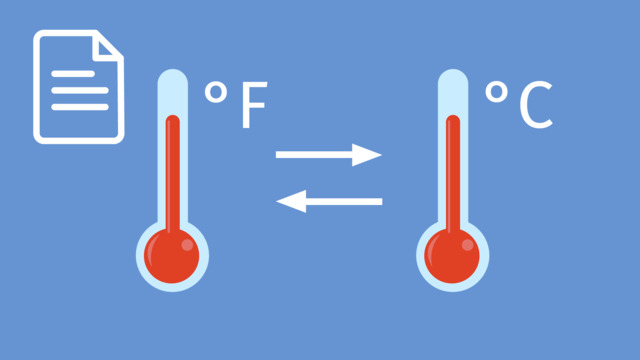
Temperature Conversion

Decimal Expansions

Division with Exponents

How to Convert Decimals Expansions

Multiplication with Exponents

Improper Fractions and Mixed Numbers

Multiplying Mixed Numbers: Word Problems











